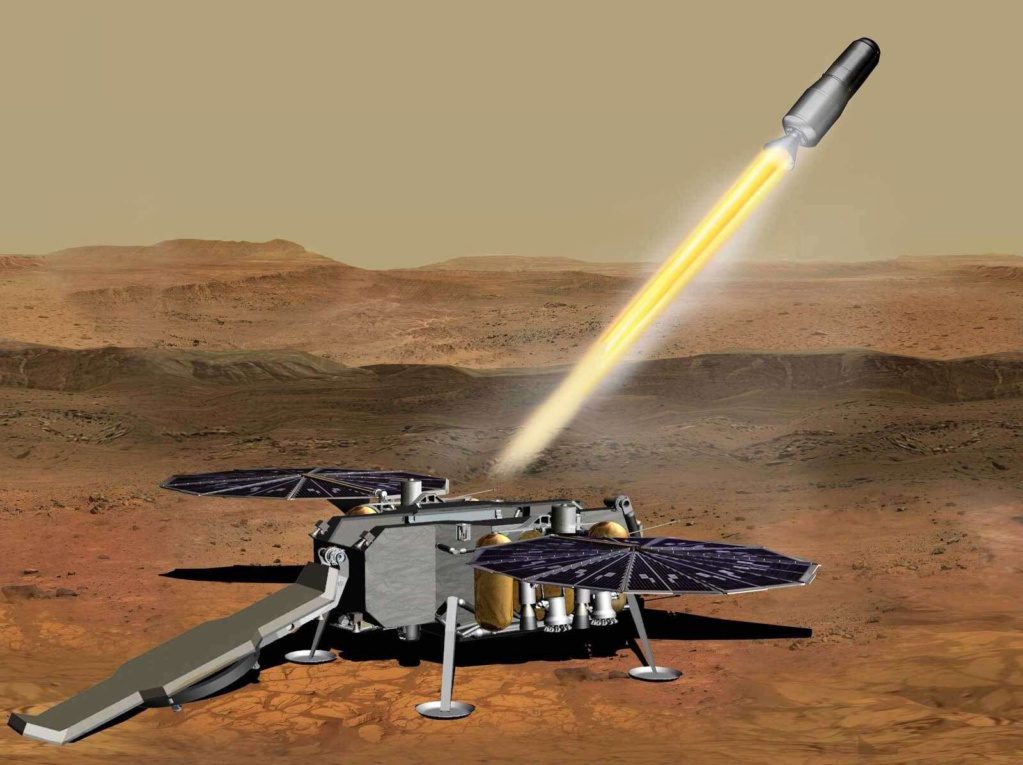“Perseverance” is preparing to send the first sample of Martian rocks to Earth

NASA's "Perseverance" has finally deposited its first sample of Martian rocks for return to Earth.
The robot began its mission to find ancient biomarkers in the mud on the Red Planet on April 22 that could indicate the presence of alien life there.
The rover has been roving around the delta to look for sampling sites that might contain ancient organic microbes, before drilling for the sample.
The titanium tube contains a core of igneous rocks extracted from the Jezero crater area on Mars called “South Séítah” on January 31.
The specimen has been unofficially named Malay, a duplicate of one of 17 currently hidden in the heart of Perseverance.
Malay was dropped at the base of the delta on December 21, at a site known as the "Three Forks" - a reference to where three options for a route into the delta merged.
This marks the first ten duplicates that will be deposited here over the next two months, but ideally, they won't be needed.
The plan is for Perseverance to deliver its original samples to a robotic lander that will reach Mars in the future.
The probe will then use a robotic arm to place tubes into the containment capsule of a small rocket, which will then be launched into Mars orbit.

There, another spacecraft will come to pick up the containment capsule and return it to Earth, in what is known as the Mars Sample Return campaign.
However, if Perseverance cannot deliver its original samples to the probe, two sample recovery helicopters will collect the duplicate samples instead.
After Perseverance arrived at Three Forks, it took nearly an hour for the landing to be completed. This is because he first had to reach his stomach to catch the troughs, and then watch it with his internal CacheCam.
Then, it dropped it about three feet (89 cm) onto the surface of Mars.
Finally, engineers back at NASA's Jet Propulsion Laboratory (JPL) in Pasadena, California had to verify that the sample had not rolled into the path of Perseverance's wheels.
They also wanted to make sure it didn't land on one end and was stuck vertically, but if it had the rover it would be able to ram it with its robotic arm.
To perform the check, they had the rover's WATSON camera — attached to a 7-foot (2-meter) arm — swing down to look under it and confirm a successful fall.
Thus began the first repository of human samples on another planet, and it will be built up with nine more samples over the coming weeks.
“Seeing our first sample on Earth is a wonderful culmination of our main mission period, which ends on January 6,” said Rick Welch, deputy project manager for Perseverance at JPL. It's a nice alignment, as we start our cache, we also close this first chapter of the quest."
Perseverance landed on Mars on February 18 last year, after a nearly seven-month journey through space, and conducted its first test drive just over two weeks later.
Until the beginning of “#Campaign 2” – the current search for the Jezero crater for signs of life – the rover spent time testing its instruments and surveying the geological features of Mars.
She collected eight core rock samples from her first science expedition and completed a record-breaking 31-day Martian day within about 3 miles (5 kilometers) of Mars.
Perseverance reached Three Forks, the threshold of the ancient Jezero River Delta, on April 13.
The delta rises more than 130 feet (40 metres) above the crater floor, and promises to hold many geological discoveries - perhaps even evidence of microscopic life on Mars billions of years ago.
Since then, this has served as the staging area for the rover's second science mission, the Delta Front campaign.
Scientists know from studying delta regions on Earth that fine, clay-rich rocks in these environments are good for preserving ancient biomarkers, which are complex organic molecules created by life that have been preserved in rocks for billions of years.
Perseverance selects a sample using its onboard set of tools to detect whether organic molecules are present before drilling with its drill bit.
Once extracted, the core samples will be returned to Earth where scientists can analyze them in laboratories. They will identify any organic materials present and describe their molecular structures in detail.
These analyzes can help determine whether any organic molecules present in the Martian delta rocks are biomarkers or non-biological organics.
NASA wants to return these rocks to Earth in the 2030s.
Scientists hope that in addition to providing answers about possible ancient life on the Red Planet, they will also reveal more about the Martian climate and how it evolved.
Source : websites

